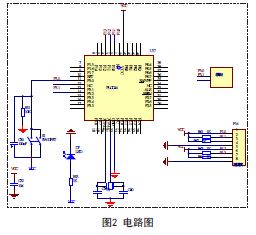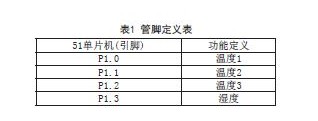1 Introduction
With the development and popularization of social information technology, the automation level of industrial process control is getting higher and higher, and various data collection on industrial sites is becoming more and more common. However, when some existing industrial sites are transformed, they are found. There are some difficulties in collecting industrial field data. For example, the data acquisition control center is too far away from the industrial site, or it is not in one area at all. It may be distributed in several different cities or regions, perhaps because it is an old factory, if it is old. In the case that the planting area may affect production or may not penetrate the wall or be buried underground, other methods must be used to collect data. Wireless is a common method, because wireless technology does not need For secondary wiring, the data collection points can be flexibly set and can be collected at multiple points. There are many forms in wireless data acquisition, such as wireless output technology, zigbee technology, Bluetooth technology, infrared technology, etc. In this paper, we introduce the data acquisition technology based on GSM network, because the coverage of GSM network has been spread all over Throughout the country, with the help of the GSM network, specific industrial field data can be collected and monitored in places where there are mobile phone signals in China and even in the world. In this paper, the temperature and humidity acquisition in the industrial site is taken as the acquisition target, the temperature and humidity information is sent to the control terminal through the GSM module, and then the various switches of the industrial site are controlled according to the temperature and humidity information to maintain the temperature and humidity of the industrial site. A stable range.
2. System analysis and requirements
(1) Demand analysis
Firstly, the system needs to collect the temperature and humidity information of the industrial site, and then control the GSM module to send information. When the control terminal receives the information and completes the processing, it also needs to accept the control information of the control terminal, and correspondingly control the control information of the control terminal. the response to.
(2) System design
According to the above design idea, an intelligent control chip is needed first. This paper selects the 51-chip system which is more commonly used. When the complexity of industrial process control is improved, it can respond to the use of ARM series control chip or DSP chip and embed The operating system completes the control of the entire process. When the data acquisition is completed, it is sent to the data terminal through the GSM module. Therefore, the entire acquisition system needs to be composed of three parts: a temperature and humidity sensor, an intelligent control chip, and a communication module with the control terminal, the GSM module.
3. Component Description
Temperature acquisition sensor:
Because 51 single-chip microcomputer is used as the control core, 51 single-chip microcomputer will increase the number of peripheral circuits if it adopts analog sensor due to its own limitations. Moreover, due to various serious interferences in the industrial field, a digital temperature sensor is adopted. The DS18B20 acts as a temperature acquisition probe. The DS18B20 adopts a single bus structure, which can realize data acquisition with only one data line, and can realize multi-point measurement on one bus, that is, mounting multiple temperature sensors on one bus. Moreover, in the case of a relatively close distance, the data line can be used to reduce cable usage, simplify wiring, wide supply voltage range, compatible with 3.3V and 5.5V power supply, and can define temperature alarm information. At the same time, the sensor's temperature measurement range is also very wide, from -55 degrees to positive 125 degrees, the normal industrial site temperature acquisition is sufficient, the temperature accuracy range is adjustable from 0.5 degrees to 0.065. Similarly, DHT11 is used as the humidity acquisition probe. It is also a single-bus digital sensor ideal for use as a sensor in low-cost digital humidity acquisition systems.
In the system, in the GSM communication, Q2406B is used as the communication module to realize the communication between the control terminal and the 51 MCU in the field. Q2406B is a very good GSM module produced by France wavecom company. It has its own AT command system, which makes it easy to communicate with the external serial interface, complete the information exchange and control module information receiving and sending tasks.
4. Hardware schematic
4.1 Electrical connection diagram
The 51 MCU collects the data of the field environment into the MCU through the data bus, and then sends the data through the GSM module, as shown in Figure 1.

4.2 Circuit Schematic The circuit diagram of this circuit is shown in Figure 2.
As shown in Figure 2: the main control chip connects four single-bus sensors through P1.0, P1.1, P1.2P1.3. The sensor can make the temperature sensor or the humidity sensor. When the sensor is connected, the hardware is When programming, because the logic timing of the two devices is different, it is necessary to separately write different codes to drive. The definition in this example is shown in Table 1.


Can you boost your WiFi signal with outdoor 4G CPE?
When you travel or go to some remote areas, you may be annoyed by poor reception. Is there any way to get a strong WiFi router signal outdoors in a 4G LTE network? Very good, outdoor 4G CPE router would be a good choice!
What is an outdoor 4G CPE router?
An outdoor 4G CPE router differs from a Wifi-only router in that it needs to be connected to a fiber optic network. The 4G CPE WiFi router can pick up the carrier's 4G LTE network signal and convert it into broadband and Wi-Fi. Just plug in your SIM card with your data plan and enjoy a stable and reliable WiFi signal with family and friends. This Outdoor CPE can be used in harsh environments. If you install your router outside or near a window in an area with a weak 4G signal, your device can receive a better 4G signal.
Second, what are the characteristics of outdoor 4G CPE router?
1. Better network for ODU and IDU
4G CPE outdoor routers include an outdoor unit (ODU) and an indoor unit (IDU). Help your device receive the best outdoor cellular signal through the ODU, and connect to the indoor WiFi router through the network cable to experience better network speed. As shown in the figure below, an outdoor LTE CPE (ODU) is installed outdoors and connected to an indoor Wi-Fi router (IDU) via a network cable. The entire 4G device is powered by POE. This data will be transmitted over the same Ethernet cable, eliminating the need to connect the ODU to a power outlet.
2. High-speed multi-user available
The outdoor 4G CPE features a built-in 4G LTE modem and a 5dBi high-gain antenna. LTE CAT4, download speeds up to 150Mbps, WiFi speeds up to 300Mbps, can connect 32 users at the same time. The high-gain antenna of the outdoor 4G CPE router enables it to have higher power and stronger signal transmission and reception capabilities than mobile phones. Therefore, the CPE router can receive the signal. If your phone can't receive a signal in some areas. Sometimes you also use your phone as a hotspot to share Internet access with your friends, right? Similarly, this 4G LTE CPE router allows 32 users to connect to WiFi at the same time, allowing more users to connect and receive a better signal than a phone sharing hotspot. In addition, the IDU has four Lan ports and can be connected to the device through network cables, which is also a backup mode of the Internet.
3. Excellent outdoor performance and design
On the one hand, outdoor LTE CPE is waterproof, UV resistant and corrosion resistant. It can be used at -20℃~60℃ operating temperature. Therefore, it is ideal for outdoor deployment. On the other hand, there are a variety of installation methods. CPE can be mounted on Windows or walls by mounting brackets. It is also possible to attach it to the antenna mast. In addition, the signal strength is displayed through the LED indicator to facilitate users to find the best location to get a better 4G signal.
4. Support different frequency bands
Outdoor 4G CPE supports a variety of frequency bands, including LTE-FDD, LTE-TDD, 3G WCDMA, and 2G GSM network bands. Meet the needs of different frequency bands in different regions and make full use of network resources.
5. Convenient management of CPE
Start the Web browser to log in to the Web management page. You can configure and manage the CPE easily. The web management system supports Linux. Provides functions such as WebUI management, Telnet, SSH terminal system status monitoring, NTP client, synchronization between devices and the system clock network, and configuration file import and export.
6. Applicable to various application scenarios
CPE is designed to provide ISP or operator with 4G LTE outdoor wifi router to facilitate network connection, whether at home, or in enterprises and remote areas, to bring users a wonderful network experience.
All in all, an outdoor 4G CPE router is an excellent choice for connecting to the Internet in remote areas and places where the signal is weak, the wired network is unreliable, or there is a lack of reliable WiFi. It's worth deploying outdoor CPE in rural, coastal, boat, caravan, campsite and remote areas to enjoy the best network speeds and outdoor activities! It can even reduce complex cabling deployments for home networks without the need to install a wired fiber network.
4G Outdoor Cpe,4G Lte Outdoor Cpe Router,4G Lte Outdoor Cpe,Outdoor 4G Lte Cpe Router
Shenzhen MovingComm Technology Co., Ltd. , https://www.movingcommtech.com